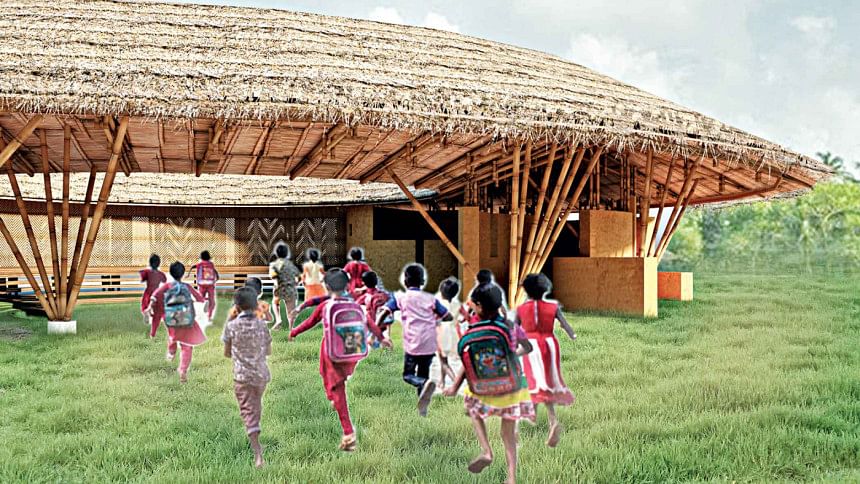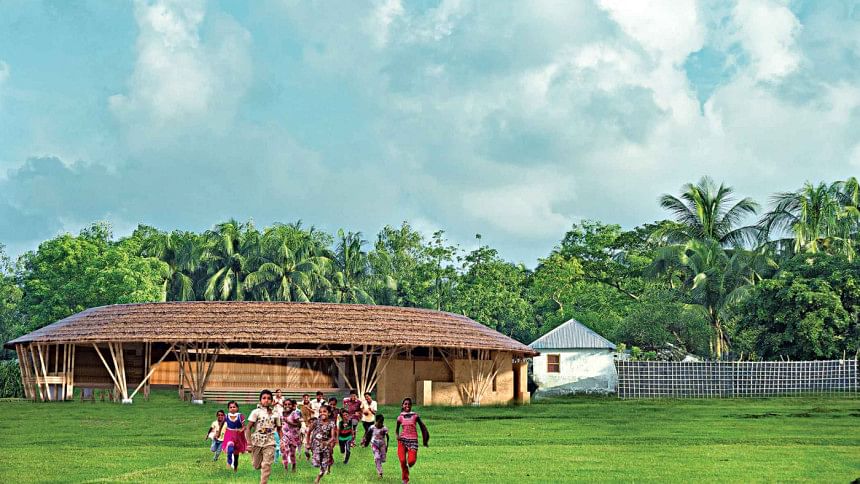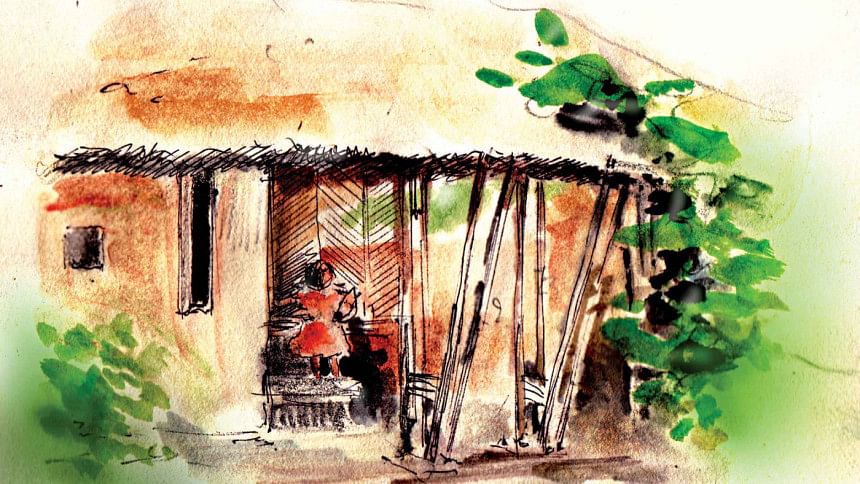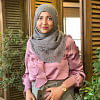Award-winning architectural marvel amidst nature’s serenity

Bangladesh, a country rich in natural beauty with its abundance of trees and bounty of rivers, is truly gifted with the best of Mother Nature. Despite the rapid structural development and progress, the country's natural beauty never fails to mesmerise us with its golden paddy fields and stretched miles of greenery.
Many remote islands encapsulate nature in its purest form, and one such island is Sonadia Island, located in Shonadia, Moheshkhali, offshore of the Cox's Bazar coast in Chattogram Division.
It is a small island measuring approximately 9 sq. km. and is known to be one of the most isolated parts of the country with a small population. While the people residing there get to enjoy the sublime magnificence of nature, they are also exposed to myriad problems to get by with basic every day chores.
There are two sides of the island, namely Pashchim Para and Purbo Para, where the former side lacks basic civic facilities with no proper healthcare or education system. While on the other side, there resides a scanty number of primary schools, mosques, and tube wells for education and accommodation. Transportation is available via boat, that too, only twice a day depending upon weather conditions.
In order to eradicate some of the aforementioned problems and provide the inhabitants of the island with better living conditions, Youth for Change took an initiative to create a proper education system there. Additionally, by providing vocational training to elders and setting up a weekly medical camp, it advanced to become a project of community development.
The project, known as Sonadia School, which is a six-year long project that is still under construction, is a result of architectural intelligence and evolution. This is warranted through the attainment of a prestigious award on a global platform that also proudly represents Bangladesh's progress in the field of architecture internationally.
The principle architect behind this project, Ar Ador Yousuf, was recently awarded by the acclaimed International Academy of Architecture (IAA) for Exhibition — Competition of Architectural Projects and Built Works. It was also exhibited at the University of Architecture, Civil Engineering and Geodesy, Sofia, Bulgaria from 16 to 27 November, 2020.
The International Academy of Architecture (IAA) is a global platform that promotes architecture and connects architects around the world by holding various programs to recognise the best architectural projects and award them accordingly. Among the various categories enlisted, Sonadia School received the award under the "Education Buildings" category.
Sonadia School exemplifies how nature and architecture can coexist to provide the best of its combined benefits to people living nearby. The concept of the architectural project rests on three pivotal elements — the landscape, structure, and design. These three major considerations have been beautifully incorporated in the construction of Sonadia School.

The brainchild behind this spectacular design, Ar Ador Yousuf, said, "I wanted to create something that not only provided a place for education, but did so by eliminating the problems that the inhabitants of the island face every day, by taking into consideration the unique landscape factors as well." It is safe to say without a speck of doubt, that he immaculately accomplished his goal.
Travelling around the island is difficult due to the harsh weather conditions, where in monsoon season people are reliant upon the tide to travel by boat, as during other times, the path is muddy. Keeping the landscape in mind, Sonadia School is designed over a raised platform that prevents it from flooding. A channel is connected to the eastern part of the courtyard, through which boats can easily move inside the school.
The award-winning project features a pavilion structure that seamlessly incorporates natural light and wind, while the round shape works to lessen the impact of wind force. This provides abundance of daylight to run the day school routinely and for night school, several solar panels have been attached. Utilising natural resources in the best possible manner, the school is designed to function with high efficiency.
Sonadia School is not only built to be functional in an efficient manner, but it is also an architectural marvel. The round courtyard at the centre serves as the ground for various activities where children can play and wander freely, training can be provided to the elderly such for weaving baskets and fishnet, and where medical camp activities can be conducted.
Remaining detached from many modern luxuries of life, the inhabitants of the island are acquainted to a minimal lifestyle and have learnt to live with the available resources. Suiting their preferences, the entire structure is made from locally sourced bamboos and built using traditional building materials such as ropes and straws.
Above the bamboo structure, the roof contains a local thatch that is impenetrable against heavy rainfall. The locals take pride in the fact that they built this school where no fancy techniques were involved and yet, it stands strong and sturdy. Albeit taking a minimal approach, this award-winning project portrays the epitome of modern architecture.
"Even in this era of modernisation, I prefer working with projects that are close to nature, especially ones that focus on community development. Modern architecture can seamlessly be incorporated in these areas as well and this is something I like to do," said Yousuf.
It is a matter of reverence that despite being located in one of the most isolated and remote areas of the country, Sonadia School depicts the perfect amalgamation of modern architecture and nature in the most fascinating matter.

Photo courtesy: Shompod Abdullah Al Hai

 For all latest news, follow The Daily Star's Google News channel.
For all latest news, follow The Daily Star's Google News channel. 



Comments